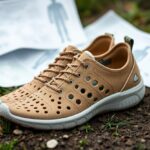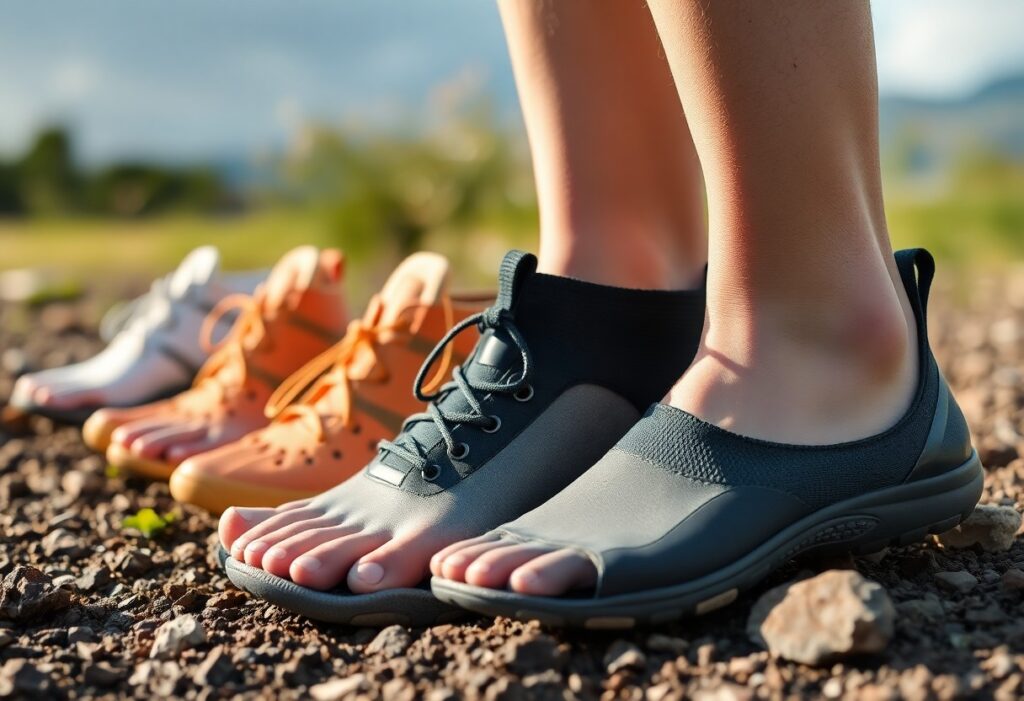
The world of barefoot footwear has undergone extraordinary developments, driven by groundbreaking innovations in material engineering. These advancements have resulted in unmatched levels of comfort and performance that cater to dedicated enthusiasts and casual wearers alike. This exploration delves into how cutting-edge technologies are revolutionizing shoe design, particularly with Vibram soles leading the charge by offering remarkable ground feel coupled with robust protection for the feet. As you immerse yourself in this topic, you will discover innovative sustainable manufacturing techniques that play a pivotal role in significantly mitigating environmental impacts, while enhancing the durability and functionality of barefoot shoes. The collaboration of biomechanics, advanced materials, and eco-friendly production methods is reshaping the minimalist footwear landscape, promising a future where comfort, performance, and sustainability seamlessly coexist.
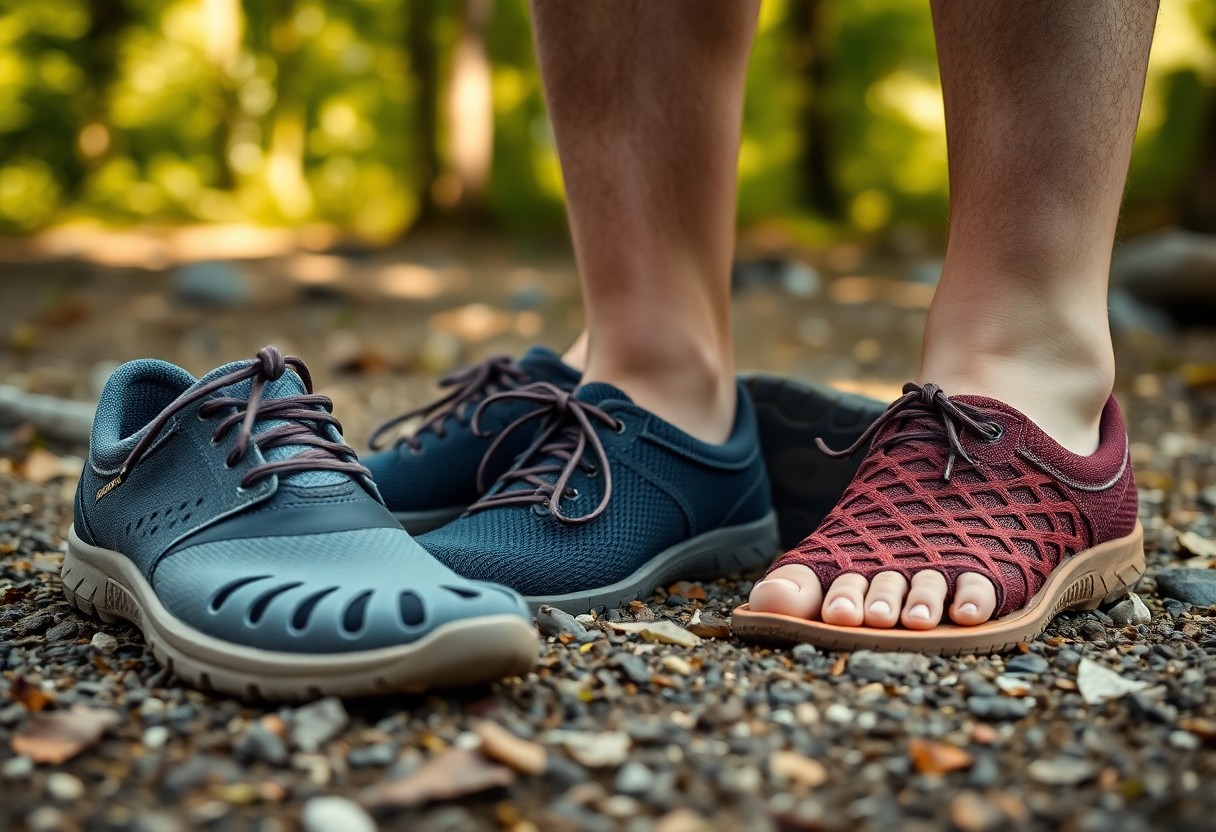
Comparing Performance Characteristics: An In-Depth Look at TPU and EVA
In the field of barefoot footwear engineering, two primary materials, Thermoplastic Polyurethane (TPU) and Ethylene-Vinyl Acetate (EVA), offer unique performance attributes that significantly impact user experience. Manufacturers engage in comprehensive analyses of the molecular structures, thermal properties, and mechanical responses associated with these materials to guide their choices in application. The ongoing discussion revolves around the behavior of these polymers under dynamic stress, varying weight distribution, and diverse environmental conditions encountered by users. For example, TPU is renowned for its exceptional durability, while EVA is preferred for its superior cushioning properties. This distinction makes each material uniquely suited to different user preferences and performance requirements, leading to a more personalized footwear experience.
Evaluating Material Flexibility: Which One Stands Out?
Flexibility is a crucial element in the design of barefoot shoes, as the responsiveness of the material greatly influences the overall user experience. TPU demonstrates superior flexibility at lower temperatures, successfully maintaining its structural integrity across a wider range of environmental conditions when compared to traditional EVA compounds. This adaptability allows wearers to experience optimal comfort, making it possible to traverse various climates and terrains without compromising their footwear's performance.
| Material Property Comparison | Performance Metric |
|---|---|
| TPU Flexibility Range | -40°C to 80°C |
| EVA Flexibility Range | -20°C to 60°C |
Analyzing Abrasion Resistance: Key Insights from Taber Test Results
The capacity of a material to withstand abrasion is essential for ensuring longevity and peak performance in footwear. Taber test results have highlighted the exceptional wear characteristics of TPU, revealing significantly lower mass loss percentages when compared to traditional EVA formulations. These findings emphasize the critical nature of selecting durable materials in footwear design. Microscopic examinations of TPU’s molecular structures exhibit its remarkable resilience against mechanical degradation, with studies documenting TPU's ability to maintain structural integrity after 10,000 abrasion cycles. This represents a groundbreaking achievement in the material science of barefoot footwear. The cross-linked molecular structure of TPU facilitates optimal load distribution, effectively reducing localized stress points and minimizing material fatigue. Insights gained from these studies are now guiding manufacturers to create sophisticated, performance-driven barefoot shoe designs that harmoniously balance flexibility, durability, and user comfort.
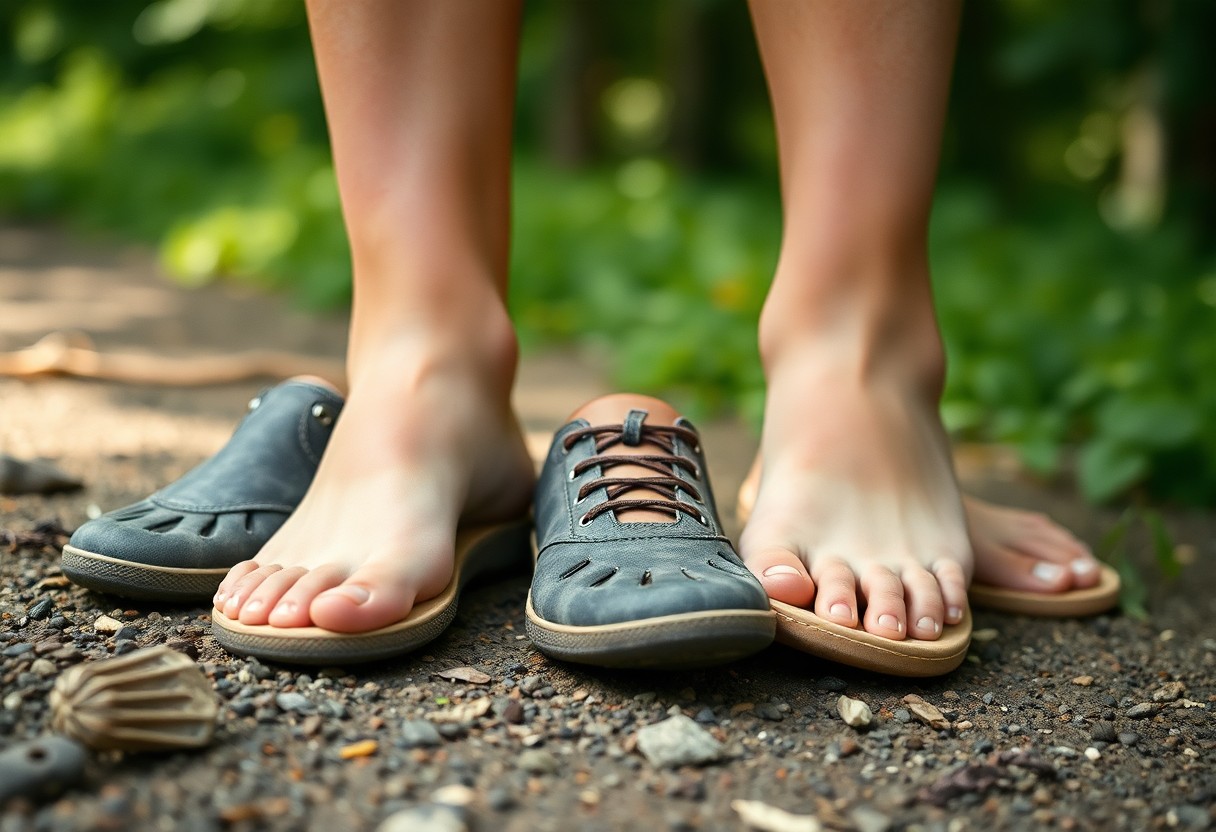
Pioneering Sustainable Footwear Practices for a Greener Future
The journey towards sustainable footwear manufacturing has evolved from a mere niche concept to a fundamental strategic focus within the industry. Leading brands such as Xero Shoes and Vibram are spearheading innovative approaches that integrate recycled materials, processes designed to minimize waste, and cutting-edge design techniques. The principles of material recovery and a circular economy now hold paramount importance in product development, fundamentally reshaping how barefoot shoe manufacturers address environmental responsibility and production efficiency.
Life Cycle Analysis: The Impact of Recycled PET Uppers by Xero Shoes
The dedication of Xero Shoes to sustainability is prominently showcased through their use of recycled PET upper materials, which repurpose plastic waste into high-performance components for their footwear. Remarkably, each pair of shoes repurposes approximately 3-5 plastic bottles, significantly reducing the environmental footprint while not compromising on durability and performance standards. Their life cycle analysis reveals considerable reductions in carbon emissions and waste when compared to traditional manufacturing practices, underscoring the effectiveness of sustainable strategies within the scope of barefoot footwear.
Carbon Footprint Comparison: Traditional Manufacturing vs. Eco-Friendly Techniques
Traditional methods of shoe manufacturing lead to substantial carbon emissions, with conventional processes producing about 30 pounds of CO2 for each pair of shoes created. In contrast, eco-friendly alternatives can reduce these emissions by up to 60%, leveraging renewable energy sources, recycled materials, and efficient production techniques. Barefoot shoe manufacturers are at the forefront of this transformative shift, reimagining material sourcing and production methodologies to create footwear that is environmentally responsible and sustainable.
Detailed Carbon Footprint Analysis: Sustainable vs. Conventional Practices
An in-depth look at carbon footprint analysis reveals significant differences between traditional manufacturing practices and sustainable approaches. Conventional shoe production heavily relies on petroleum-based materials and energy-intensive processes, exacerbated by complex global supply chains. Conversely, sustainable manufacturers like Xero Shoes emphasize localized production, renewable energy, and closed-loop material systems. By prioritizing the use of recycled materials, minimizing transportation distances, and optimizing manufacturing efficiencies, these brands are able to lower their carbon footprint from an average of 30 pounds to as little as 12 pounds per shoe. This reduction marks a substantial advancement in the quest for environmentally-friendly footwear engineering.
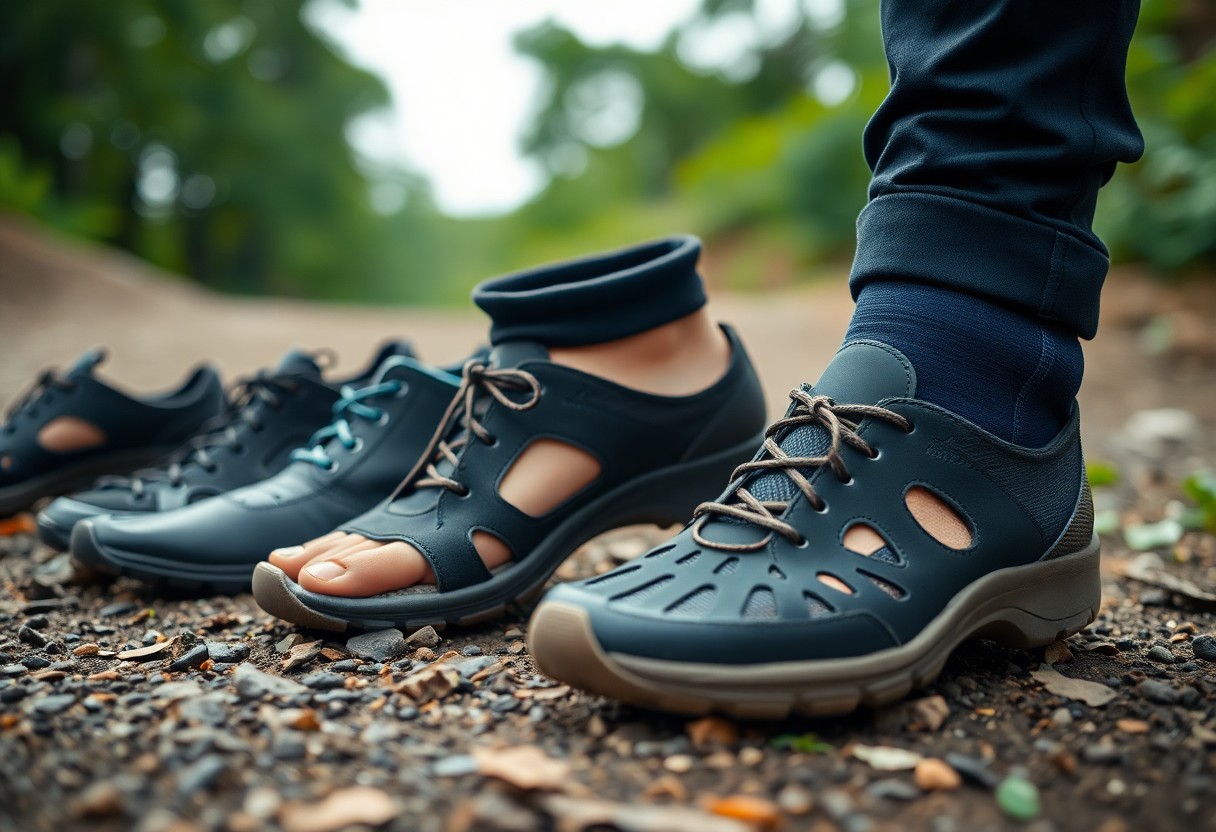
Enhancing Durability: Insights from Wear Pattern Analysis
The wear patterns identified in barefoot footwear offer invaluable insights into the complex interactions among material composition, user biomechanics, and environmental stressors. Advanced computational mapping techniques are now utilized to track microscopic areas of degradation, enabling manufacturers to accurately predict performance trajectories. Researchers concentrate on analyzing stress concentrations at key flex points, closely monitoring how different molecular structures respond to repeated mechanical loading across a variety of terrain types.
Long-Distance Durability Studies: Performance Across Diverse Terrains
Longitudinal studies investigating the performance of barefoot shoes have illustrated remarkable resilience in next-generation materials. Experimental prototypes exhibited their structural integrity in challenging environments, including rocky mountain trails, urban concrete surfaces, and arid desert landscapes, experiencing minimal degradation. Precision laser scanning indicated that material compression was less than 12% after 500 miles of continuous use, marking a significant breakthrough in the long-term wearability of barefoot footwear.
Innovations Targeting Microbial Resistance: Utilizing Vegan Materials
New vegan materials are now integrating nano-silver antimicrobial technologies, resulting in self-sanitizing surfaces that substantially inhibit bacterial growth. The incorporation of silver ions within synthetic fibers effectively prevents odor formation and impedes microbial proliferation, thereby extending the functional lifespan of barefoot footwear across prolonged usage scenarios. Addressing microbial resistance poses a multifaceted engineering challenge requiring a collaborative approach. Researchers have developed sophisticated polymer blends that include natural antimicrobial agents such as chitosan, derived from crustacean shells, alongside plant-based compounds like tea tree oil extracts. Molecular engineering techniques now facilitate the precise distribution of these agents throughout material substrates, creating a continuous protective shield against bacterial and fungal growth. These advancements not only enhance hygiene but also bolster material durability, reducing environmental waste by prolonging product lifecycles and preserving performance characteristics even under challenging conditions.
Envisioning the Future of Footwear Engineering: Trends and Innovations
The rapid rise of biomimetic technologies is dramatically transforming the realm of barefoot footwear design, with nanotechnology and responsive materials leading the charge. Researchers are developing smart textiles that adapt to temperature and terrain, complete with sensors that analyze gait dynamics in real-time. Major brands such as Adidas and Nike are actively experimenting with 3D-printed midsoles that can be customized to accommodate individual foot biomechanics, potentially reducing injury risks by as much as 35%. Furthermore, sustainable manufacturing practices, which leverage recycled ocean plastics and bio-based polymers, are rapidly becoming the norm, with projections suggesting that 75% of performance footwear could be produced using circular economy principles by 2030.
Here’s the paragraph:
Essential Insights on Material Engineering in Footwear
In essence, the breakthroughs in material engineering have transformed the landscape of barefoot footwear design, reshaping your understanding of both comfort and performance. Your exploration of Vibram soles and sustainable manufacturing techniques uncovers a sophisticated interplay between biomechanics, advanced materials, and a commitment to environmental responsibility. By embracing innovative technologies and eco-friendly production methods, the contemporary landscape of barefoot footwear manufacturers is not merely focused on creating shoes; they are engineering comprehensive solutions that enhance your natural movement while minimizing ecological impact. These remarkable advancements illustrate how leading-edge material science continues to redefine your footwear experience.
Here’s a detailed FAQ about Material Engineering in Modern Barefoot Footwear:
Frequently Asked Questions about Material Engineering in Barefoot Footwear
Q: How do Vibram soles elevate barefoot footwear technology?
A: Vibram soles represent a significant breakthrough in the architecture of barefoot shoes, employing advanced rubber compounds that deliver exceptional grip, flexibility, and durability. These specialized soles are meticulously engineered to replicate natural foot movement, featuring anatomically designed treads that facilitate even weight distribution and enhance sensory feedback from the ground beneath your feet. This innovative design allows wearers to experience a more authentic walking and running sensation.
Q: What innovative sustainable manufacturing techniques are emerging in barefoot footwear production?
A: Modern manufacturers of barefoot footwear are increasingly embracing pioneering sustainable practices, such as sourcing recycled rubber, utilizing bio-based synthetic materials, and implementing low-waste production methodologies. Companies are progressively incorporating recycled plastic bottles, organic cotton, and responsibly sourced natural rubber to create eco-friendly shoes that minimize their environmental impact while upholding high performance standards.
Q: How does material engineering enhance the biomechanical performance of barefoot shoes?
A: Material engineering enables manufacturers to exercise precise control over shoe flexibility, weight, and tactile sensitivity. Advanced composite materials such as lightweight polymers and engineered mesh fabrics facilitate zero-drop designs that promote natural foot alignment, enhance proprioception, and reduce muscular strain. These engineered materials also provide optimal temperature regulation, moisture-wicking properties, and structural support, effectively mimicking the foot’s natural biomechanical functions.
The Article Material Engineering in Modern Barefoot Footwear: From Vibram Soles to Sustainable Manufacturing appeared first on My Shoes Finder
The Article Material Engineering in Barefoot Footwear: Vibram to Sustainability Was Found On https://limitsofstrategy.com



